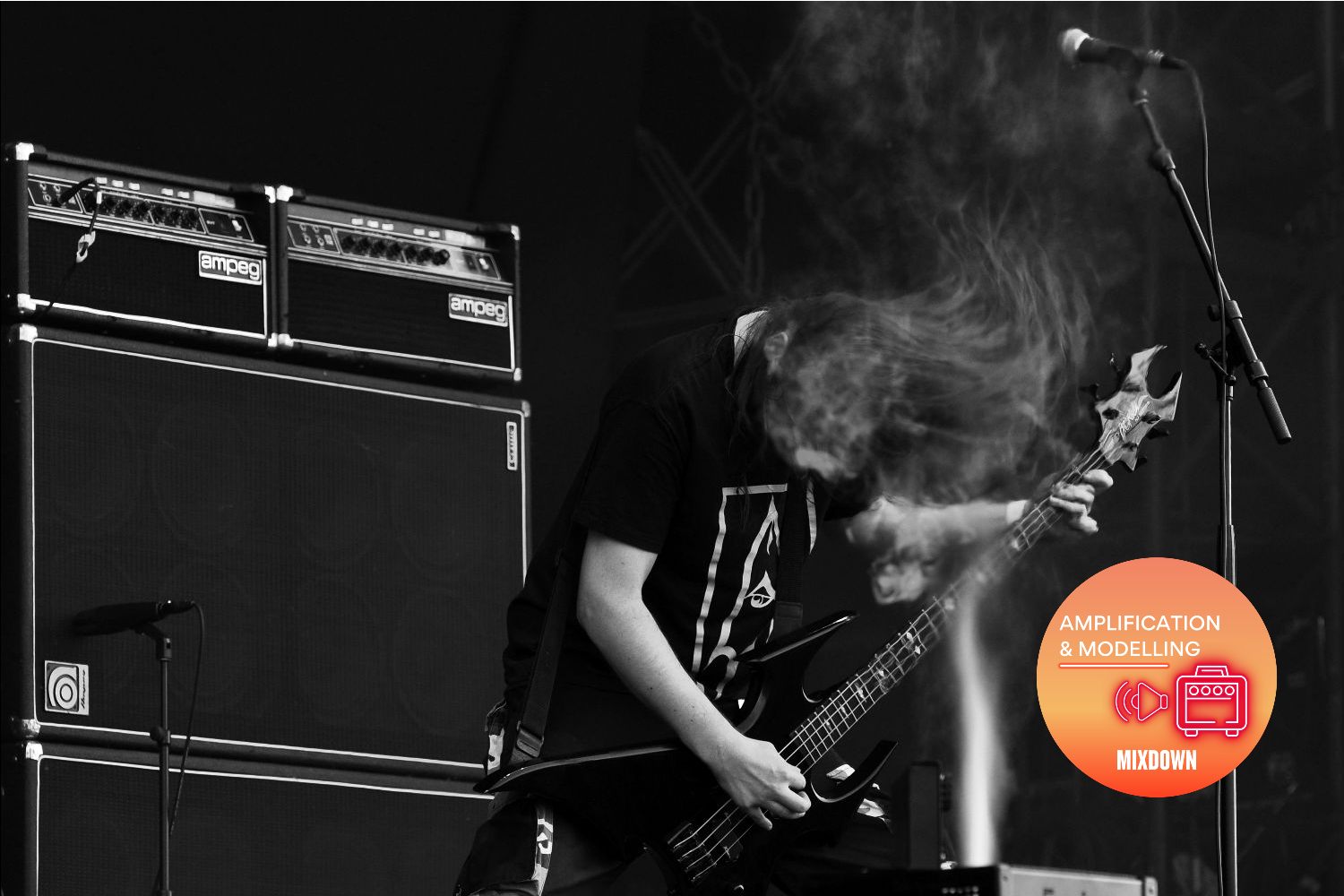Let's face it - we're all totally addicted to bass.
Easily one of the most satisfying elements of a live gig or listening through a hi-fi system at home is that feeling the bass gives. Strong, defined low end in a mix avows power and punch, ah yes, how we love the bass. But with great low end, comes great (albeit powerful) responsibility. Your choice of bass amp is a hot topic.
In order to accurately reproduce whopping amounts of clear and punchy low end without clipping, compression or distortion we need adequate amounts of power and headroom. Only then can we begin to enjoy bass fuelled nirvana.
Read all the latest features, columns and more here.
Watt’s it all About?
Every proud guitar or bass amp owner loves to spruik the wattage of their power-house amplifier, be it a smaller 15-watt tube rocker, (the crème de la crème of vintage tone) or a 1500-watt solid state monster to slam a power hungry bass through. Regardless of if whether it’s the caviar or the prawn-cocktail of amplifiers, what one will notice is the typically colossal gap between guitar and bass amps’ respective wattages, but why?
If we take a look at the typical frequency range of standard 4-string bass tuned in E, the expected range of would be 41Hz on the open E string, up to 311Hz (Eb 4) on the G string. Compare this to a standard 6-string guitar in the same tuning, with a range of 82Hz on the low open E string, up to 1047Hz (C6) fretted on the high E string.
On first inspection the gap between the two lowest notes might not seem that significant, a jump of 40Hz, big deal, but this is in fact a leap of a whole octave. This octave gap bears huge significance when a bass amp needs to reproduce a clean and clear 41Hz from that bass.
Low frequencies are by their very nature longer in length and have more power than higher frequencies. Running with the 41Hz example above, 41Hz has a wavelength of 8.37m à la, 41Hz needs 8.37m to complete one whole cycle. Pretty crazy.
Compare this to the highest note of the bass (being 311Hz in standard tuning) and we have a wavelength of 1.1 meters. With such a long wavelength, a lot of power is required to reproduce this with accuracy, without sounding undefined, muddy or distorted. It’s also useful to think of low frequencies having “weight” to them, which again requires a lot of energy and power to move them. With this in mind, let’s use this (all be it overly simplified) analogy.
A person is moving house and they require a large trailer to move their bulky items, these bulky items have some serious weight to them. The person has a respectable but moderately powered four-cylinder sedan. It can just manage the load of the trailer, but the engine is working very hard, as is the suspension and is under enormous strain overall.
The person’s neighbour has a raucous four-wheel drive with an impressive V8 engine. As the neighbour’s vehicle is far more powerful with its gargantuan sized engine, rugged build and tough, iron fisted suspension, it’s safe to say the neighbour’s vehicle is going to have a far easier time towing the trailer. It’s designed to handle heavy loads with ease and is going to be working at a far lower capacity that the humble sedan performing the same task.
With such a concentration in lower frequencies, the bass by its very nature has an enormous amount of weight, length and energy behind it, all of which commands a bas amp boasting the power to handle this consolidation of energy. Regardless of using a solid state or a tube based circuit, the bass requires a healthy dose of wattage, hence why this specification is typically around four times than that of a guitar amp.
Where’s Your Head At?
Now that we’ve covered the wattage debacle, how do we ascertain how much we need? How much is too much or, not enough? Each amplifier when pushed, reaches a point where the signal put into it begins to clip. Distortion? We love distortion!
Well, yes, distortion can be very pleasing to our human ears, but we don’t necessarily always want it. A bass player in a soul band may not desire a clipped signal, no matter how “vibey” and “tough” sounding it is. Which brings me to the next point: headroom. It’s dependent on context.
Some players may be very happy with a lower headroom bass amp, meaning that it doesn’t have to be played very loud before it starts to distort. A matter of taste. Others will require their bass to sound, clear, full and completely “clean”, not even approaching where their signal would clip, allowing the transients of notes to cut through the mix without getting squashed or compressed – think of a slap bass player for example.
Another consideration is if the amp is going to be able to compete with the other instruments in the band – namely, a couple of blaring guitar players and an overly excited drummer being a typical band scenario. Referring back to the car and trailer analogy, the rugged V8 four-wheel drive was the obvious choice to toe the trailer without putting unnecessary strain and stress on the vehicle. It’s more powerful design required less energy to perform the same task as the humble sedan.
If a bass amp is competing with other loud instruments in the mix and the aim is to have a big, phat, warm, clean bass tone, the ideal scenario is to have ample amounts of headroom, which translates into more wattage or power. This leaves room to move if more volume is required, without risking unpleasant distortion or clipping. But there’s another very important point of discussion to complete this puzzle.
Paying Ohmage
Fear not, this won’t be getting mathematical, but a basic understanding of ohms (or impedance) is vital when it comes to amplifying a bass. Ohms/impedance is the measurement of resistance. As electricity flows through a circuit, the flow will meet various components which have resistance. It sounds like some sort of sci-fi saga, but we promise, it’s not.
For another quick analogy, think about a hose connected to a tape with water running through it. If the hose is crimped, this will reduce the flow of water out the other side, voila, resistance! Same goes with electrical current through a bass amp into a speaker cabinet transferring into sound. If the impedance on the speaker cabinet is higher than that of the amp, we’re going to get less power/flow (or output) compared to if the impedances on both are matched, aka, optimal transfer.
Each amp has a minimum ohms rating, or minimum load. It’s very important to note that some serious damage can occur if the ohmage of the speakers (or load) is below the (minimum) ohmage of the amplifier. In a scenario such as this there’s not enough resistance, causing the bass amp to overwork, turning into heat, and potentially into flames, not ideal!
Anything above the rated minimum ohmage is fine, but power (or output) is reduced (and subsequently the wattage) as the there’s more resistance from the speakers. Sadly, we can’t just go plugging bass amps into any old speaker cab and expect glistening results. Matching ohmage is vital in order to achieve optimum and (more importantly) safe results.
To Bass or Not to Bass?
Next time your bass player friend gets giddy about their mammoth bass rig, remember there’s dame good reason for that setup to have so much power. A carefully selected bass rig with optimal wattage, headroom and output allows us all to enjoy that low end goodness, and safe to say, we praise the bass filled heavens for it! The more power in that rig, the more room there is to play with, so better to be safe than sorry, right?
Whether it’s a crazy dynamic slap bass fiend or a laid back “in the pocket” groover, you can never have enough bass, the more the better I say!
Never miss a story – sign up to our mailing list for all the latest news, reviews, features and giveaways.

